JERUSALEM: The Israeli military said 10 Israelis and four Thai nationals were released late Wednesday from captivity in the Gaza Strip.
The hostages crossed into Egypt and were to be transferred to Israel.
It was the sixth such release under a cease-fire between Israel and Hamas. Israel is to release 30 Palestinian prisoners later Wednesday.
The cease-fire is set to expire early Thursday. International mediators are trying to extend the deal to facilitate the release of additional hostages held by Hamas.
The militant group captured some 240 people in an Oct. 7 cross-border attack that triggered the war. Some 150 people are believed to remain in captivity.
A new swap of hostages held by Hamas for Palestinian prisoners in Israel got underway late Wednesday in the final hours of the current Gaza truce as international mediators raced to extend the halt of Israel’s air and ground offensive to allow further exchanges.
The Israeli military said a group of 10 Israeli women and children and four Thai nationals had been handed over by Hamas to the Red Cross in Gaza and were heading to exit the territory. Earlier, two Russian-Israeli women were freed by Hamas in a separate release. Israel was set to free 30 Palestinian prisoners in return.
Negotiators were working down to the wire to hammer out details for a further extension of the truce beyond its deadline of early Thursday. The talks appear to be growing tougher as most of the women and children held by Hamas are freed, and the militants are expected to seek greater releases in return for freeing men and soldiers.
International pressure has mounted for the cease-fire to continue as long as possible after nearly eight weeks of Israeli bombardment and a ground campaign in Gaza that has killed thousands of Palestinians, uprooted three quarters of the population of 2.3 million and led to a humanitarian crisis. Israel has welcomed the release of dozens of hostages in recent days and says it will maintain the truce if Hamas keeps freeing captives.
Still, Prime Minister Benjamin Netanyahu underscored on Wednesday that Israel will resume its campaign to eliminate Hamas, which has ruled Gaza for 16 years and orchestrated the deadly attack on Israel that triggered the war
“After this phase of returning our abductees is exhausted, will Israel return to fighting? So my answer is an unequivocal yes,” he said. “There is no way we are not going back to fighting until the end.”
He spoke ahead of a visit to the region planned this week by US Secretary of State Antony Blinken to press for further extensions of the truce and hostage releases.
In the West Bank, Israeli troops killed two Palestinian boys — an 8-year-old an a 15-year-old — during a raid on the town of Jenin, Palestinian health officials said. Security footage showed a group of boys in the street who start to run, except for one who falls to the ground, bleeding.
The Israeli military said its troops fired on people who threw explosives at them but did not specify it was referring to the boys, who are not seen throwing anything. Separately, the military said its troops killed two Islamic Jihad militants during the raid.
So far, the Israeli onslaught in Gaza seems to have had little effect on Hamas’ rule, evidenced by its ability to conduct complex negotiations, enforce the cease-fire among other armed groups, and orchestrate the release of hostages. Hamas leaders, including Yehya Sinwar, have likely relocated to the south.
With Israeli troops holding much of northern Gaza, a ground invasion south will likely bring an escalating cost in Palestinian lives and destruction.
Most of Gaza’s population is now crammed into the south. The truce has brought them relief from bombardment, but the days of calm have been taken up in a frenzied rush to obtain supplies to feed their families as aid enters in greater, but still insufficient, amounts.
United States, Israel’s main ally, has shown greater reticence over the impact of the war in Gaza. The Biden administration has told Israel that if it launches an offensive in the south, it must operate with far greater precision.
ISRAEL’S HOSTAGE DILEMMA
The plight of the captives and shock from the Oct. 7 attack have galvanized Israeli support for the war. But Netanyahu is under pressure to bring the hostages home and could find it difficult to resume the offensive if there’s a prospect for more releases.
Since the initial truce began on Friday, both sides have been releasing women and children in their exchanges. After Friday’s releases, Gaza militants still hold around 20 women, accordding to Israeli officials. IF the truce continues at the current rate, they would be out in a few days.
After that, keeping the truce going depends on tougher negotiations over the release of around 126 men Israel says are held captive – including several dozen soldiers.
For men — and especially soldiers — Hamas is expected to push for comparable releases of Palestinian men or prominent detainees, a deal Israel may resist.
An Israeli official involved in hostage negotiations said talks on a further extension for release of civilian males and soldiers were still preliminary, and a deal would not be considered until all the women and children are out. The official spoke on condition of anonymity because negotiations were ongoing.
With Wednesday’s releases, a total of 73 Israelis, including dual nationals, have been freed during the six-day truce, most of whom appear physically well but shaken. Another 24 hostages — 23 Thais and one Filipino — have also been released. Before the cease-fire, Hamas released four hostages, and the Israeli army rescued one. Two others were found dead in Gaza.
So far, most of the 180 Palestinians freed from Israeli prisons have been teenagers accused of throwing stones and firebombs during confrontations with Israeli forces. Several were women convicted by Israeli military courts of attempting to attack soldiers.
Palestinians have celebrated the release of people they see as having resisted Israel’s decades-long military occupation of lands they want for a future state.
The war began with Hamas’ Oct. 7 attack into southern Israel, in which it killed over 1,200 people, mostly civilians. The militants kidnapped some 240 people back into Gaza, including babies, children, women, soldiers, older adults and Thai farm laborers.
Israel’s bombardment and ground invasion in Gaza have killed more than 13,300 Palestinians, roughly two-thirds of them women and minors, according to the Health Ministry in Hamas-ruled Gaza, which does not differentiate between civilians and combatants.
The toll is likely much higher, as officials have only sporadically updated the count since Nov. 11 due to the breakdown of services in the north. The ministry says thousands more people are missing and feared dead under the rubble.
Israel says 77 of its soldiers have been killed in the ground offensive. It claims to have killed thousands of militants, without providing evidence.
TENSE CALM IN GAZA
For Palestinians in Gaza, the truce’s calm has been overwhelmed by the search for aid and by horror as they see the extent of destruction.
In the north, residents described entire residential blocks leveled to the ground in Gaza City and surrounding areas. The smell of decomposing bodies trapped under collapsed buildings fills the air, said Mohmmed Mattar, a 29-year-old resident of Gaza City who along with other volunteers searches for the dead under rubble or left in the streets.
They have found and buried 46 so far during the truce, he said. Most were unidentified. More bodies remain inside rubble but can’t be reached without heavy equipment, or are left on streets that are unapproachable because of Israeli troops nearby, Mattar said.
In the south, the truce has allowed more aid to be delivered from Egypt, up to 200 trucks a day. But aid officials say it is not enough, given that most now depend on outside aid. Overwhelmed UN-run shelters house more than 1 million displaced people, with many sleeping outside in cold, rainy weather.
At a distribution center in Rafah, large crowds line daily up for newly arrived bags of flour. But supplies run out quickly before many can get their share.
“We’ve been searching for bread for our children,” said one woman in line, Nawal Abu Namous. “Every day, we come here … we spend money on transportation to get here, just to go home with nothing.”
Some markets and shops have reopened, but prices for the few items in stock have skyrocketed. Winter clothes are unavailable. One clothes shop owner in Deir Al-Balah told The Associated Press that he hates opening his doors in the morning, knowing he’ll spend most of the day apologizing to customers for not having winter items.
The head of the World Health Organization, Tedros Adhanom Ghebreyesus, said some 111,000 people have respiratory infections and 75,000 have diarrhea, more than half of them under 5 years old. “More people could die from disease than bombings.”
“We are fed up,” said Omar Al-Darawi, who works at the overwhelmed Al-Aqsa Martyrs hospital in central Gaza. “We want this war to stop.”
Israeli military says 10 Israelis, four Thai nationals, have been released by Hamas
https://arab.news/yzw5r
Israeli military says 10 Israelis, four Thai nationals, have been released by Hamas

- International pressure has mounted for the cease-fire to continue as long as possible after nearly eight weeks of Israeli bombardment and a ground campaign in Gaza
Khan Yunis fighting displaces 180,000 Gazans in four days: UN

- Israel has killed at least 39,175 Palestinians in Gaza, according to the Hamas-run territory’s health ministry
KHAN YUNIS, Palestinian Territories: More than 180,000 Palestinians have fled fierce fighting around the southern Gaza city of Khan Yunis in four days, the United Nations said Friday, after an Israeli operation to extract captives’ bodies from the area.
Recent “intensified hostilities” in the Khan Yunis area, more than nine months into the Israel-Hamas war, have fueled “new waves of internal displacement across Gaza,” said the UN humanitarian agency, OCHA.
It said “about 182,000 people” have been displaced from central and eastern Khan Yunis between Monday and Thursday, and hundreds are “stranded in eastern Khan Yunis.”
The Israeli military on Monday ordered the evacuation of parts of the southern city, announcing its forces would “forcefully operate” there, including in an area previously declared a safe humanitarian zone.
On Wednesday, Israel said five bodies of captives seized during Hamas’s October 7 attack that triggered the war had been recovered from the area.
Israel’s military said on Friday that its forces had “eliminated approximately 100 terrorists” in the city this week.
Israel’s military chief, Lt. Gen. Herzi Halevi said the captives’ bodies were pulled from underground tunnels and walls in “a hidden place.”
Troops “were near those fallen bodies in the past, we did not know how to reach them” until this week, Halevi said in a statement.
Witnesses and rescuers said heavy battles continued around eastern Khan Yunis on Friday. The Nasser Hospital said 26 bodies were brought to the medical site.
The October 7 attack on southern Israel resulted in the deaths of 1,197 people, most of them civilians, according to an AFP tally based on official Israeli figures.
Out of 251 people taken hostage that day, 111 are still held in the Gaza Strip, including 39 the military says are dead.
Israel’s retaliatory offensive against Hamas has killed at least 39,175 Palestinians in Gaza, according to the Hamas-run territory’s health ministry.
According to UN figures, the vast majority of Gaza’s 2.4 million people have been displaced at least once by the fighting.
Gaza mediators, Israel spy chief to meet in Rome: Egypt media

- Cairo would also like to see a “complete (Israeli) withdrawal from the Rafah crossing” connecting Gaza to Egypt, the official added
CAIRO: Egyptian, Qatari and US mediators are to meet with Israeli negotiators in the Italian capital Sunday in the latest push for a Gaza truce, Egyptian state-linked media said.
“A four-way meeting between Egyptian officials and their American and Qatari counterparts, in the presence of Israel’s intelligence chief, will be held in Rome on Sunday to reach an agreement on a truce in Gaza,” Al-Qahera news, which has links to Egyptian intelligence, reported on Friday, citing a “senior official” who was not identified.
Egypt, along with Qatar and the United States, has been involved in months of mediation efforts aimed at ending the Israel-Hamas war raging in the Gaza Strip for more than nine months.
The proposed truce deal would be linked to the release of hostages held by Gaza militants in exchange for Palestinian prisoners held in Israel.
US news outlet Axios separately reported that CIA Director Bill Burns is expected to hold talks on the issue in Rome on Sunday with Israeli, Qatari and Egyptian officials.
The official quoted by Al-Qahera News said Egypt insists on “an immediate ceasefire” as part of the agreement, which should also “ensure the entry of humanitarian aid into Gaza” and “safeguard the freedom of movement” of civilians in the Palestinian territory.
Cairo would also like to see a “complete (Israeli) withdrawal from the Rafah crossing” connecting Gaza to Egypt, the official added.
Recent mediation efforts have focused on a framework which US President Joe Biden presented in late May, billing it an Israeli proposal.
On Thursday, Israeli Prime Minister Benjamin Netanyahu addressed Congress, pleading for continued US support, before meeting with Biden and Vice President Kamala Harris.
Harris, the presumptive Democratic nominee in the US presidential election later this year, said after the meeting she would not be “silent” on the suffering in Gaza and that it was time to end the “devastating” conflict.
The Gaza war began after Hamas’s October 7 attack on southern Israel resulted in the deaths of 1,197 people, most of them civilians, according to an AFP tally based on official Israeli figures.
Out of 251 people taken hostage that day, 111 are still held in the Gaza Strip, including 39 the military says are dead.
Israel launched a retaliatory campaign against Gaza rulers Hamas, killing at least 39,175 people in the territory, according to its health ministry, which does not give details of civilian and militant deaths.
How climate change is exacerbating food insecurity, with dangerous consequences for import-reliant Middle East

- UN report show nations are falling well short of achieving the Sustainable Development Goal of eliminating hunger by 2030
- FAO expert warns that climate shocks could lead to more conflict in the region over limited access to water and resources
RIYADH: Global food insecurity is far worse than previously thought. That is the conclusion of the State of Food Security and Nutrition in the World 2024 report published this week by a coalition of UN entities, which found that efforts to tackle undernourishment had suffered serious setbacks.
As countries across the world fall significantly short of achieving the second UN Sustainable Development Goal of “zero hunger” by 2030, the report notes that climate change is increasingly recognized as a pivotal factor exacerbating hunger and food insecurity.

As a major food importer, the Middle East and North Africa region is considered especially vulnerable to climate-induced crop failures in source nations and the resulting imposition of protectionist tariffs and fluctuations in commodity prices.
“Climate change is a driver of food insecurity for the Middle East, where both the global shock and the local shock matter,” David Laborde, director of the Agrifood Economics and Policy Division at the Food and Agriculture Organization of the UN, told Arab News.
“Now, especially for the Middle East, I think that the global angle is important because the Middle East is importing a lot of food. Even if you don’t have a (climate) shock at home, if you don’t have a drought or flood at home — if it’s happened in Pakistan, if it’s happened in India, if it’s happened in Canada — the Middle East will feel it.”
Opinion
This section contains relevant reference points, placed in (Opinion field)
The State of Food Security and Nutrition in the World report has been compiled annually since 1999 by FAO, the International Fund for Agricultural Development, the UN Children’s Fund, the World Food Programme, and the World Health Organization to monitor global progress toward ending hunger.
During a recent event at the UN headquarters in New York, the report’s authors emphasized the urgent need for creative and fair solutions to address the financial shortfall for helping those nations experiencing severe hunger and malnutrition made worse by climate change.
In addition to climate change, the report found that factors like conflict and economic downturns are becoming increasingly frequent and severe, impacting the affordability of a healthy diet, unhealthy food environments, and inequality.
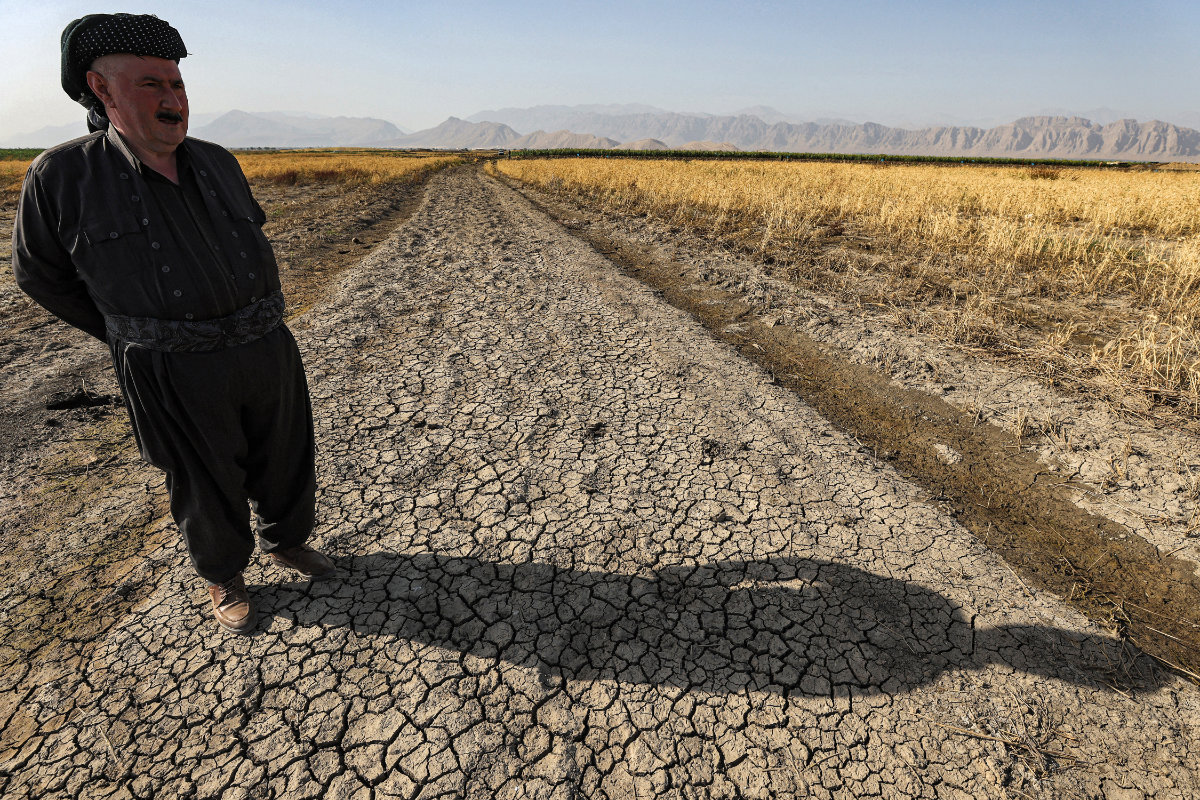
Indeed, food insecurity and malnutrition are intensifying due to persistent food price inflation, which has undermined economic progress globally.
“There is also an indirect effect that we should not neglect — how climate shock interacts with conflict,” said Laborde.
In North Africa, for example, negative climate shocks can lead to more conflict, “either because people start to compete for natural resources, access to water, or just because you may also have some people in your area that have nothing else to do,” he said.
“There are no jobs, they cannot work on their farm, and so they can join insurgencies or other elements.”
DID YOUKNOW?
Up to 757 million people endured hunger in 2023 — the equivalent of one in 11 worldwide and one in five in Africa.
Global prevalence of food insecurity has remained unchanged for three consecutive years, despite progress in Latin America.
There has been some improvement in the global prevalence of stunting and wasting among children under five.
In late 2021, G20 countries pledged to take $100 billion worth of unused Special Drawing Rights, held in the central banks of high-income countries and allocate them to middle- and low-income countries.
Since then, however, this pledged amount has fallen $13 billion short, with those countries with the worst economic conditions receiving less than 1 percent of this support.
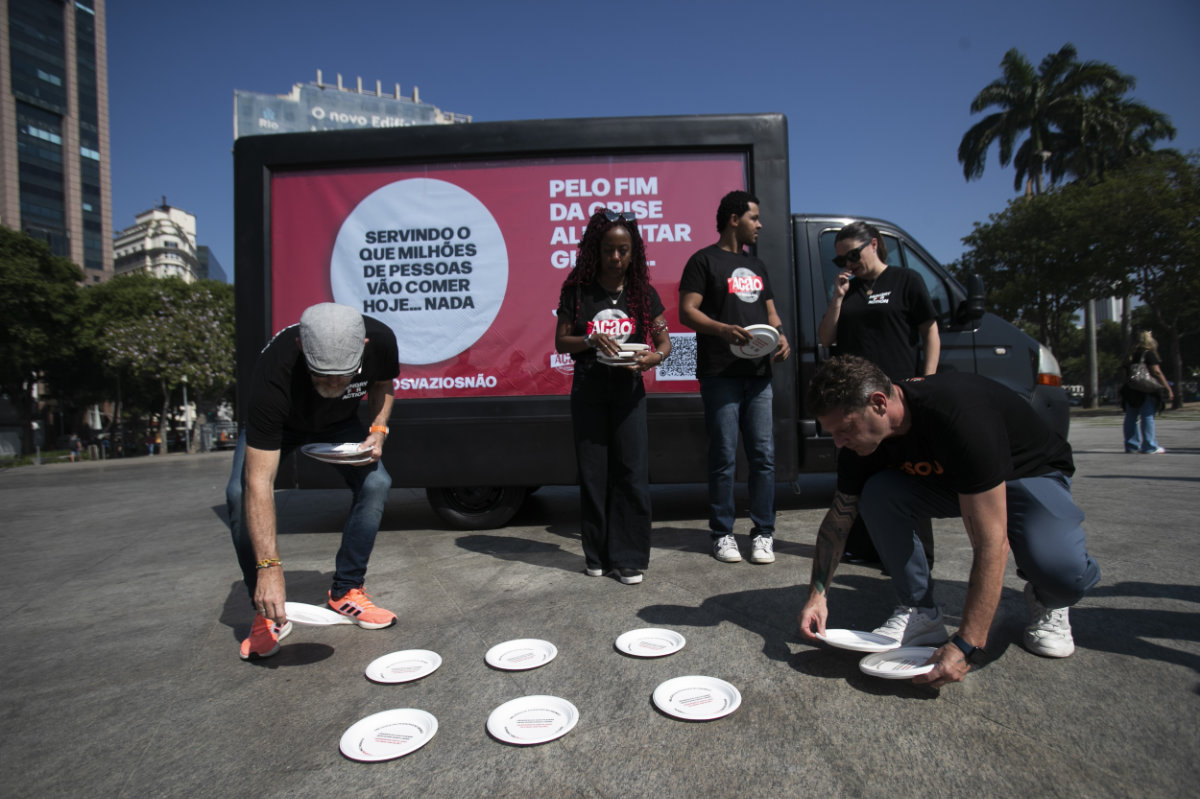
Saudi Arabia is one of the countries that has exceeded its 20 percent pledge, alongside Australia, Canada, China, France, and Japan, while others have failed to reach 10 percent or have ceased engagement altogether.
“Saudi Arabia is a very large state in the Middle East, so what they do is important, but also they have a financial capacity that many other countries don’t,” said Laborde.
“It can be through their SDRs. It can also be through their sovereign fund because where you invest matters and how you invest matters to make the world more sustainable. So, I will say yes, prioritizing investment in low- and middle-income countries on food and security and nutrition-related programs can be important.
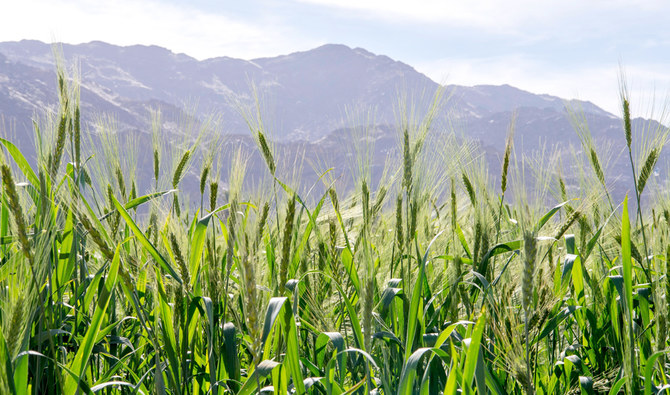
Although the prevalence of undernourishment in Saudi Arabia has fallen in recent years, the report shows that the rate of stunting in children has actually increased by 1.4 percent in the past 10 years.
There has also been an increase in the rates of overweight children, obesity, and anemia in women as the population continues to grow. In this sense, it is not so much a lack of food but a dearth of healthy eating habits.
“Saudi Arabia is a good example where I would say traditional hunger and the lack of food … become less and less a problem, but other forms of malnutrition become actually what is important,” said Laborde.

In 2023, some 2.33 billion people worldwide faced moderate or severe food insecurity, and one in 11 people faced hunger, made worse by various factors such as economic decline and climate change.
The affordability of healthy diets is also a critical issue, particularly in low-income countries where more than 71 percent of the population cannot afford adequate nutrition.
In countries like Saudi Arabia where overeating is a rising issue, Laborde suggests that proper investment in nutrition and health education as well as policy adaptation may be the way to go.
While the Kingdom continues to extend support to countries in crisis, including Palestine, Sudan, and Yemen, through its humanitarian arm KSrelief, these states continue to grapple with dire conditions. Gaza in particular has suffered as a result of the war with Israel.
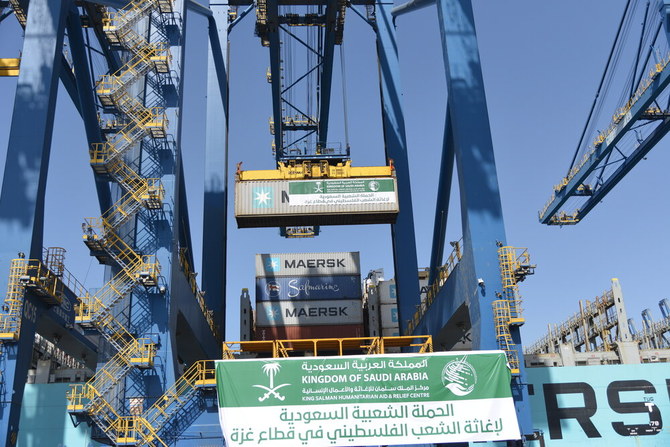
“Even before the beginning of the conflict, especially at the end of last year, the situation in Palestine was complicated, both in terms of agricultural system (and) density of population. There was already a problem of malnutrition,” said Laborde.
“Now, something that is true everywhere, in Sudan, in Yemen, in Palestine, when you start to add conflict and military operations, the population suffers a lot because you can actually destroy production. You destroy access to water. But people also cannot go to the grocery shop when the truck or the ship bringing food is disrupted.”
While Palestine and Sudan are the extreme cases, there are still approximately 733 million people worldwide facing hunger, marking a continuation of the high levels observed over the past three years.

“On the ground, we work with the World Food Programme (and) with other organizations, aimed at bringing food to the people in need in Palestine,” Laborde said of FAO’s work. “Before the conflict and after, we will also be working on rebuilding things that need to be rebuilt. But without peace, there are limited things we can do.”
FAO helps food-insecure nations by bringing better seeds, animals, technologies, and irrigation solutions to develop production systems, while also working to protect livestock from pests and disease by providing veterinary services and creating incentives for countries to adopt better policies.
The report’s projections for 2030 suggest that around 582 million people will continue to suffer from chronic undernourishment, half of them in Africa. This mirrors levels observed in 2015 when the SDGs were adopted, indicating a plateau in progress.
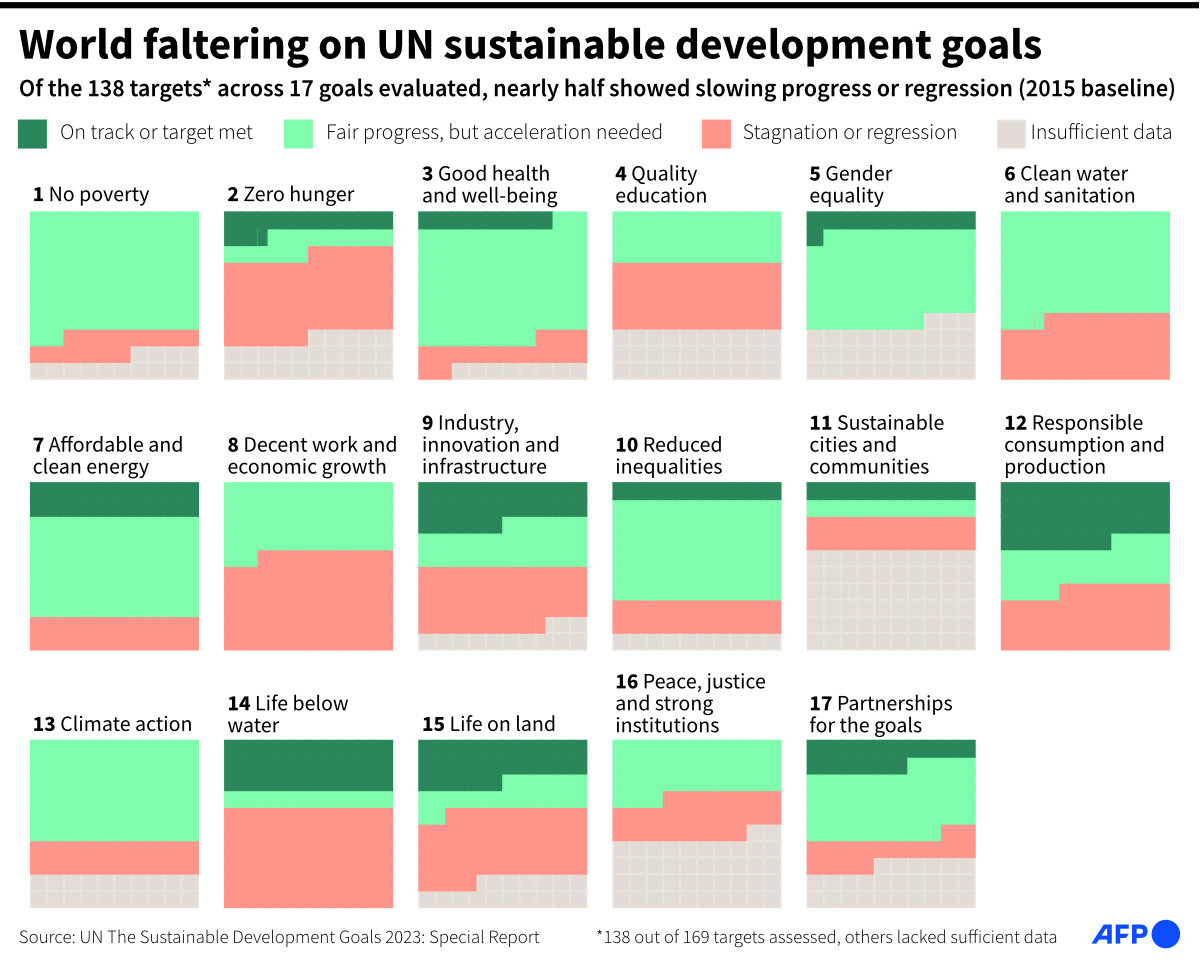
The report emphasizes the need to create better systems of financial distribution as per this year’s theme: “Financing to end hunger, food insecurity and all forms of malnutrition.”
“In 2022, there were a lot of headlines about global hunger, but today, this has more or less disappeared when the numbers and the people that are hungry have not disappeared,” said Laborde, referring to the detrimental impact of the war in Ukraine on world food prices.
“We have to say that we are not delivering on the promises that policymakers have made. The world today produces enough food, so it’s much more about how we distribute it, how we give access. It’s a man-made problem, and so it should be a man-made solution.”

Desperate for shelter, Gazans move to former prison

- Israel has killed 39,000 Palestinians according to health officials in Gaza
GAZA: After weeks of Israeli bombardment left them with nowhere else to go, hundreds of Palestinians have ended up in a former Gaza prison built to hold murderers and thieves.
Yasmeen Al-Dardasi said she and her family passed wounded people they were unable to help as they evacuated from a district in the southern city of Khan Younis toward its Central Correction and Rehabilitation Facility.
They spent a day under a tree before moving to the former prison, where they now live in a prayer room. It offers protection from the blistering sun but not much else.
Al-Dardasi’s husband has a damaged kidney and just one lung but no mattress or blanket.
“We are not settled here either,” said Al-Dardasi, who, like many Palestinians, fears she will be uprooted once again.
Israel has said it goes out of its way to protect civilians.
Palestinians, many of whom have been displaced several times, say nowhere is free of Israeli bombardment, which has reduced much of Gaza to rubble.
An Israeli airstrike killed at least 90 Palestinians in a designated humanitarian zone in the Al-Mawasi area on July 13, the territory’s Health Ministry said, in an attack that Israel said targeted Hamas’ elusive military chief, Mohammed Deif.
On Thursday, Gaza’s Health Ministry said Israeli military strikes on areas in eastern Khan Younis had killed 14 people.
Entire neighborhoods have been flattened in one of the most densely populated places in the world, where poverty and unemployment have long been widespread.
According to the UN, nine in ten people across Gaza are now internally displaced.
Israeli soldiers told Saria Abu Mustafa and her family that they should flee for safety as tanks were on their way, she said. The family had no time to change and left in prayer clothes.
After sleeping outside on sandy ground, they, too, found refuge in the prison, among piles of rubble and gaping holes in buildings from the battles that were fought there. Inmates had been released long before Israel attacked.
“We didn’t take anything with us. We came here on foot, with children walking with us,” she said, adding that many women had five or six children and that water was hard to find.
She held her niece, who was born during the conflict, which killed her father and brothers.
More than 39,000 Palestinians have been killed in Israel’s air and ground offensive since Oct. 7, Palestinian health officials say.
Hana Al-Sayed Abu Mustafa arrived at the prison after being displaced six times.
If Egyptian, US and Qatari mediators fail to secure a ceasefire they have long said is close, she and other Palestinians may be on the move once again.
“Where should we go? All the places that we go to are dangerous,” she said.
Algerian president to face two challengers in September election

- Abdelaali Hassani and Youssef Aouchiche will stand against 78-year-old Abdelmadjid Tebboune
ALGIERS: Algerian President Abdelmadjid Tebboune, accused of leading a crackdown on dissent since mass protests in 2019, is to face two challengers in a Sept. 7 election, organizers said.
Abdelaali Hassani of the Movement of Society for Peace and Youssef Aouchiche of the center-left Socialist Forces Front are the two candidates who will stand against the 78-year-old incumbent.
The other 13 hopefuls all had their candidacies rejected after failing to muster the required number of signatures of support.
Tebboune, elected in 2019 with 58 percent of the vote following months of pro-democracy protests, announced in March that the presidential election would be held on Sept. 7.
BACKGROUND
Abdelmadjid Tebboune, elected in 2019 with 58% of the vote following months of pro-democracy protests, announced in March that the presidential election would be held on Sept. 7.
A former prime minister under longtime president Abdelaziz Bouteflika, who was ousted during the 2019 protests, Tebboune has overseen a crackdown on the Hirak movement that led the protests.
Taking advantage of the restrictions on gatherings required during the COVID-19 pandemic, Tebboune’s administration banned demonstrations by Hirak and stepped up prosecutions of dissident activists, journalists, and academics.
In February, human rights watchdog Amnesty International said that five years after the pro-democracy protests erupted, Algerian authorities were still restricting the right to freedom of expression and peaceful assembly.
Also this week, Algeria expressed “great regret and strong denunciation” about the French government’s decision to recognize an autonomy plan for the Western Sahara region “within Moroccan sovereignty.”
Algeria was informed of the decision by France in recent days, an Algerian Foreign Ministry statement added.
The ministry also said Algeria would draw all the consequences from the decision and hold the French government completely responsible.
The French Foreign Ministry did not immediately comment on the Algerian statement.
Algeria’s position on the Western Sahara conflict is to implement a UN plan, which includes a self-determination referendum.
Algeria considers Morocco’s presence in the Sahara an occupation. Morocco considers Western Sahara its own, but an Algeria-backed independence movement, the Polisario Front, demands a sovereign state.
Morocco took over most of Western Sahara in 1975 from colonial Spain.
That started a guerrilla war with the Sahrawi people’s Polisario Front, which says the desert territory in the northwest of Africa belongs to it.
The UN brokered a ceasefire in 1991 and sent in a mission to help organize a referendum on the territory’s future, but the sides have been deadlocked since.



















